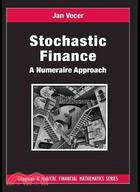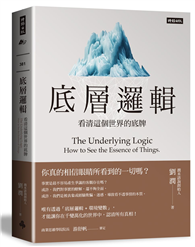| FindBook |
有 1 項符合
Stochastic Finance: A Numeraire Approach的圖書 |
| 圖書館借閱 |
| 國家圖書館 | 全國圖書書目資訊網 | 國立公共資訊圖書館 | 電子書服務平台 | MetaCat 跨館整合查詢 |
| 臺北市立圖書館 | 新北市立圖書館 | 基隆市公共圖書館 | 桃園市立圖書館 | 新竹縣公共圖書館 |
| 苗栗縣立圖書館 | 臺中市立圖書館 | 彰化縣公共圖書館 | 南投縣文化局 | 雲林縣公共圖書館 |
| 嘉義縣圖書館 | 臺南市立圖書館 | 高雄市立圖書館 | 屏東縣公共圖書館 | 宜蘭縣公共圖書館 |
| 花蓮縣文化局 | 臺東縣文化處 |
|
|
- 圖書簡介
Focuses on fundamental principles of pricing
Shows how to identify the basic assets of a given contract
Explains how to compute the prices of contingent claims in terms of various reference assets
Presents examples of a model independent formula for European call options; a simple method for pricing barrier options, lookback options, and Asian options; and a formula for options on LIBOR
Provides prerequisite material on probability and stochastic calculus in the appendix
Includes solutions to odd-numbered exercises at the back of the book
Unlike much of the existing literature, Stochastic Finance: A Numeraire Approach treats price as a number of units of one asset needed for an acquisition of a unit of another asset instead of expressing prices in dollar terms exclusively. This numeraire approach leads to simpler pricing options for complex products, such as barrier, lookback, quanto, and Asian options. Most of the ideas presented rely on intuition and basic principles, rather than technical computations.
The first chapter of the book introduces basic concepts of finance, including price, no arbitrage, portfolio, financial contracts, the First Fundamental Theorem of Asset Pricing, and the change of numeraire formula. Subsequent chapters apply these general principles to three kinds of models: binomial, diffusion, and jump models. The author uses the binomial model to illustrate the relativity of the reference asset. In continuous time, he covers both diffusion and jump models in the evolution of price processes. The book also describes term structure models and numerous options, including European, barrier, lookback, quanto, American, and Asian.
Classroom-tested at Columbia University to graduate students, Wall Street professionals, and aspiring quants, this text provides a deep understanding of derivative contracts. It will help a variety of readers from the dynamic world of finance, from practitioners who want to expand their knowledge of stochastic finance, to students who want to succeed as professionals in the field, to academics who want to explore relatively advanced techniques of the numeraire change. - 作者簡介
Jan Vecer is a professor of finance and has taught courses on stochastic finance at Columbia University, the University of Michigan, Kyoto University, and the Frankfurt School of Finance and Management. His research interests encompass areas within financial statistics, financial engineering, and applied probability, including option pricing, optimal trading strategies, stochastic optimal control, and stochastic processes. He earned a Ph.D. in mathematical finance from Carnegie Mellon University.
- 目次
Introduction
Elements of Finance
Price
Arbitrage
Time Value of Assets, Arbitrage and No-Arbitrage Assets
Money Market, Bonds, and Discounting
Dividends
Portfolio
Evolution of a Self-Financing Portfolio
Fundamental Theorems of Asset Pricing
Change of Measure via Radon?ikod羸m Derivative
Leverage: Forwards and Futures
Binomial Models
Binomial Model for No-Arbitrage Assets
Binomial Model with an Arbitrage Asset
Diffusion Models
Geometric Brownian Motion
General European Contracts
Price as an Expectation
Connections with Partial Differential Equations
Money as a Reference Asset
Hedging
Properties of European Call and Put Options
Stochastic Volatility Models
Foreign Exchange Market
Interest Rate Contracts
Forward LIBOR
Swaps and Swaptions
Term Structure Models
Barrier Options
Types of Barrier Options
Barrier Option Pricing via Power Options
Price of a Down-and-In Call Option
Connections with the Partial Differential Equations
Lookback Options
Connections of Lookbacks with Barrier Options
Partial Differential Equation Approach for Lookbacks
Maximum Drawdown
American Options
American Options on No-Arbitrage Assets
American Call and Puts on Arbitrage Assets
Perpetual American Put
Partial Differential Equation Approach
Contracts on Three or More Assets: Quantos, Rainbows and "Friends"
Pricing in the Geometric Brownian Motion Model
Hedging
Asian Options
Pricing in the Geometric Brownian Motion Model
Hedging of Asian Options
Reduction of the Pricing Equations
Jump Models
Poisson Process
Geometric Poisson Process
Pricing Equations
European Call Option in Geometric Poisson Model
L矇vy Models with Multiple Jump Sizes
Appendix: Elements of Probability Theory
Solutions to Selected Exercises
References
Index
|












